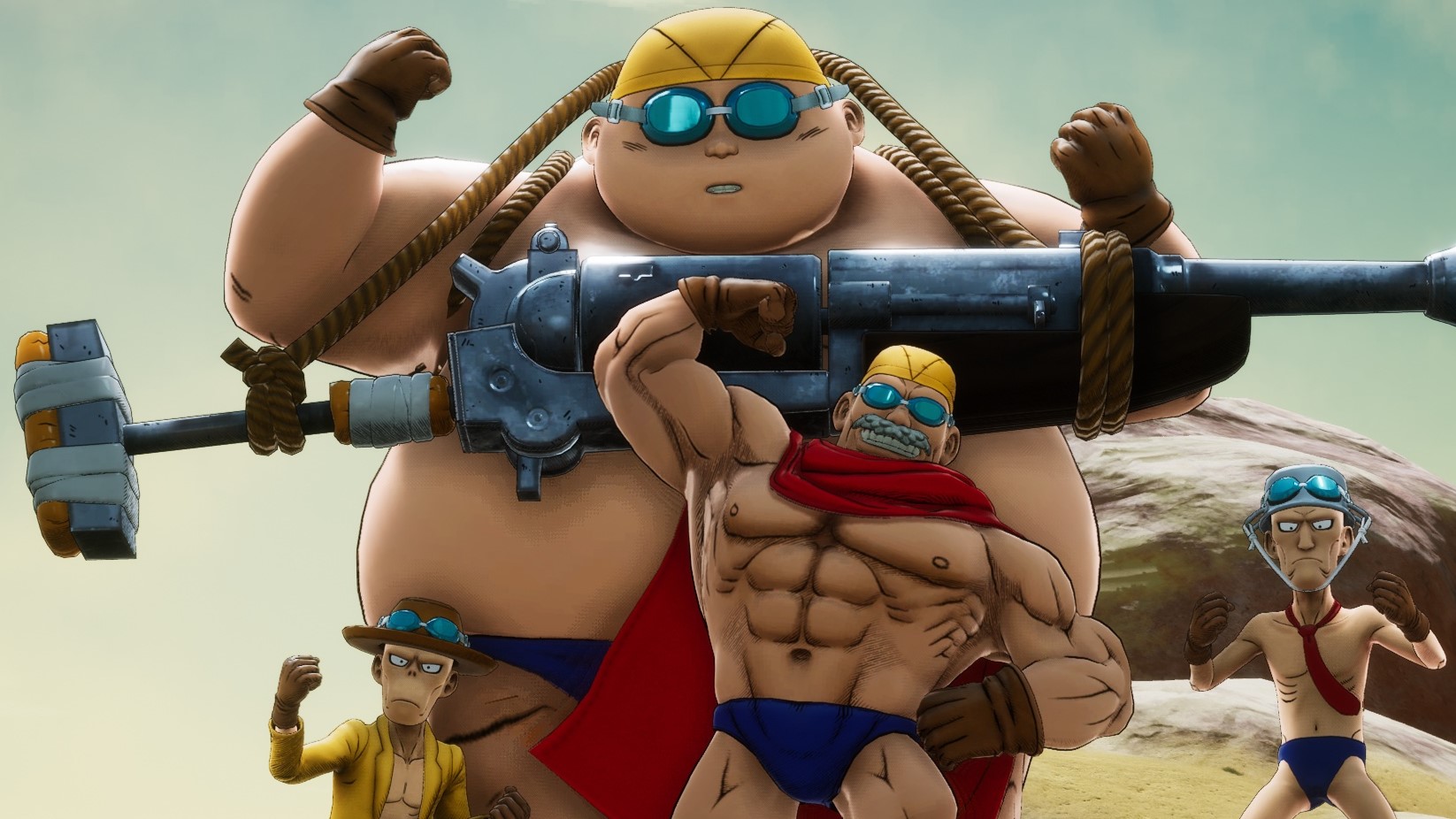
What year is it? Because I'm sure Sand Land (and the Akira Toriyama-authored anime and manga it's based on) just came out, but this action RPG, complete with numbers popping out of enemies whenever feisty lordling fiend Prince Beelzebub hits them, feels like a return to the bad old days of licensed games. The sort of forgotten PlayStation tie-in that included a bit of everything whether it should have or not, a game your well-meaning grandparents bought as a gift because they recognised the name of the movie.
What is it? Toriyama's beautiful mechanical designs trapped inside a tired marketing exercise
Expect to pay: £49.99
Developer: ILCA, Inc.
Publisher: Bandai Namco Entertainment Inc.
Reviewed on: Intel i9-13900HX, GeForce RTX 4080 (laptop), 16GB RAM
Multiplayer? No
Steam Deck: Unknown
Link: Official site
At times the game will force a side-on platforming section on me, complete with bottomless pits and an endless supply of incoming objects to avoid. In other moments I'll have to play along with some scripted chase sequence, or hit buttons at the right as if QTE-ruined cutscenes never went out of fashion. There are even multiple stealth sections to grit my teeth through. They don't turn up often, but they do turn up more often than they should in an action RPG of any age: never.
Which is a pity, because when I'm not gaming like it's 1999 there's a definite charm to Sand Land's imaginative selection of vehicles, which encompasses bulbous tanks and gigantic battleships. They're all covered in cartoonishly scuffed metal and exaggerated welding seams, and include wonderfully fine animated details. Bashed-up trucks might have a balancing pair of back legs that only set down when the vehicle comes to a stop. Tanks rear up slightly whenever they gain a sudden burst of speed, and lighter vehicles bounce around as they navigate uneven terrain. I can almost feel how hefty these machines are just by looking at them.
Anything I can drive can be built and then generously customised in a garage using materials found while I'm off adventuring, creating new weapons, new engines, or even attaching specialist extra functions and helpful drones. Once that's sorted, these machines as a whole as well as their individual parts can then be upgraded further, or have new parts swapped in as required. It's no Armored Core, but it does help make everything I build feel like it's truly mine.
So it's a shame this core part of the game is about as much fun as taking a car to a real mechanic. Each new vehicle is made up of multiple parts, all of which require an increasingly long list of materials to create, many of which must be scavenged from enemies or combined using raw ingredients at a workshop. On its own it'd be annoying, but at times the plot grinds to a halt until I build one very specific machine and then it becomes almost irritating enough to make me want to uninstall the damned game.
Item descriptions like "can be obtained from a variety of vehicles" are frustratingly unhelpful when I need just one more of some generic knickknack to build a bike that'll help me reach the next area by speeding across a desert's worth of quicksand. I had little choice but to wander around and hope I stumbled upon the right parts before I ran out of patience.
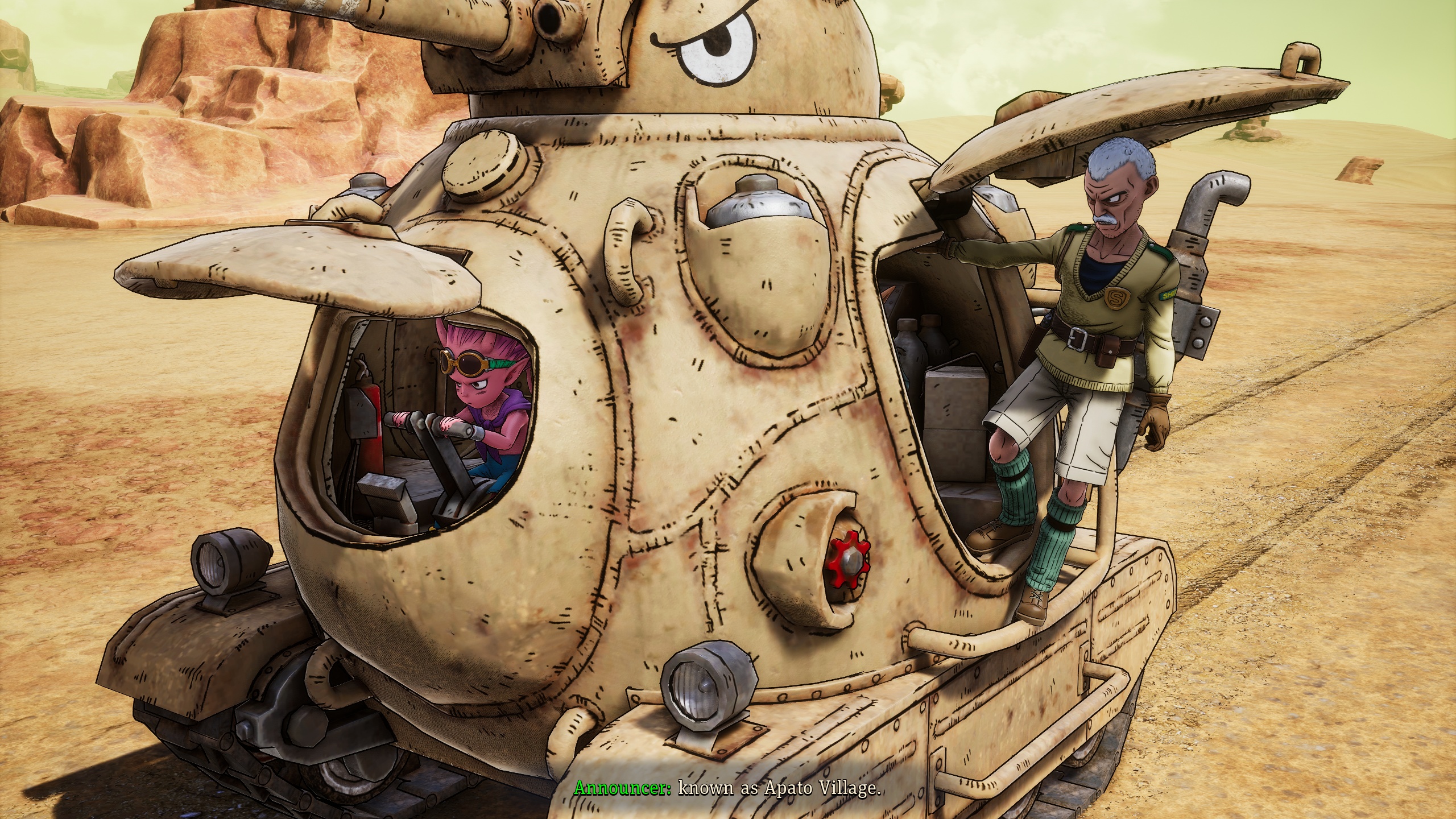
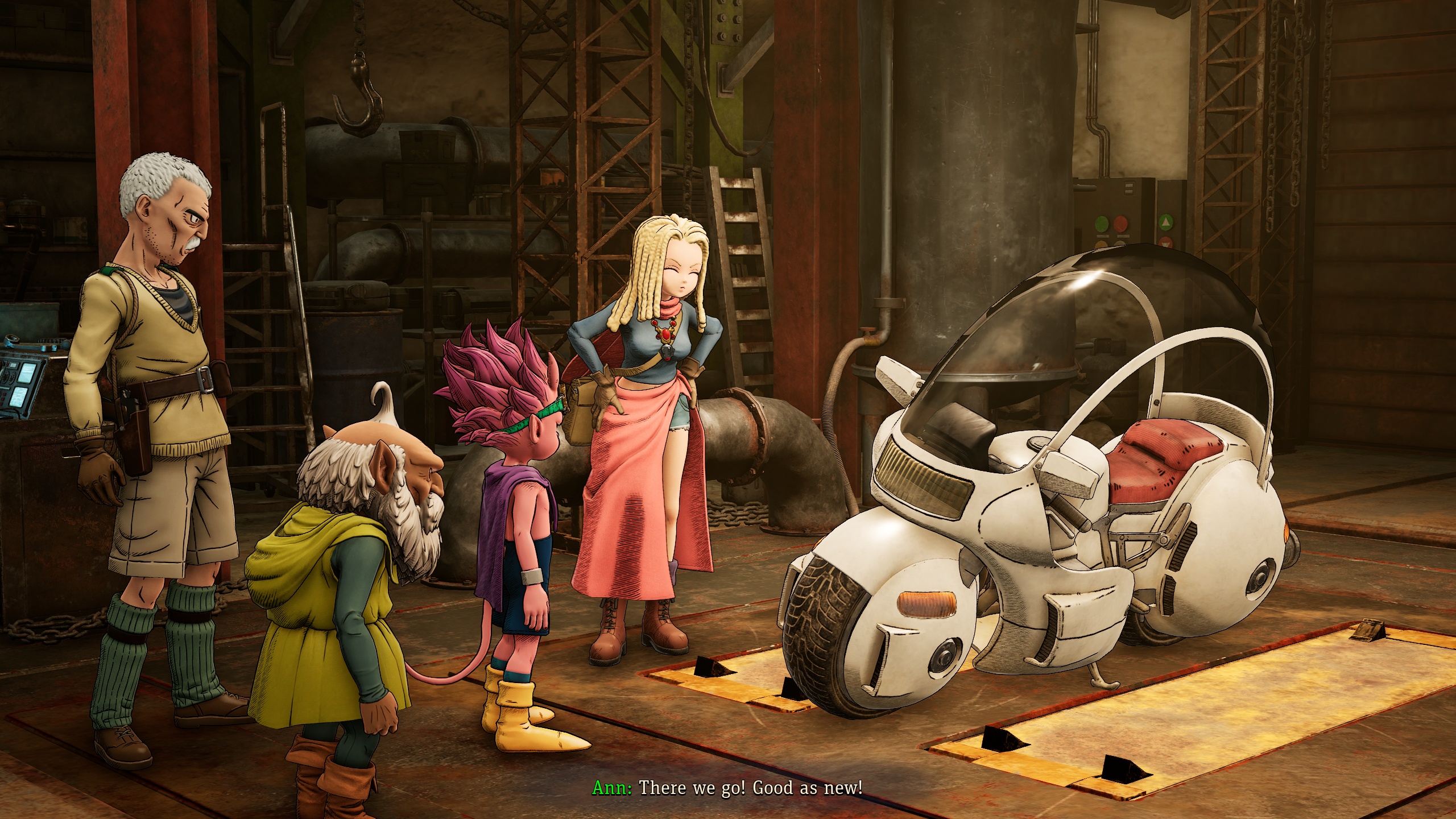
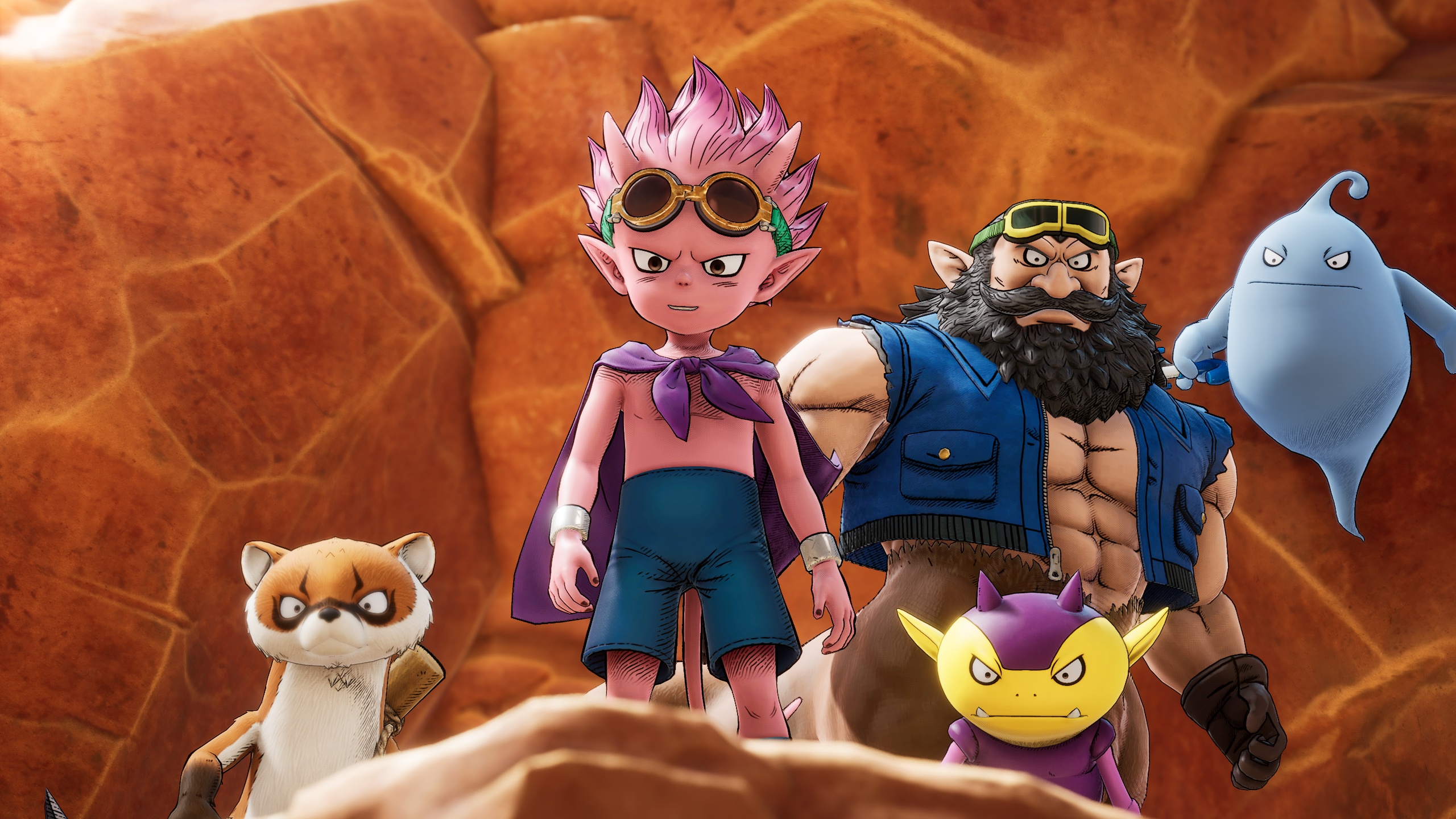
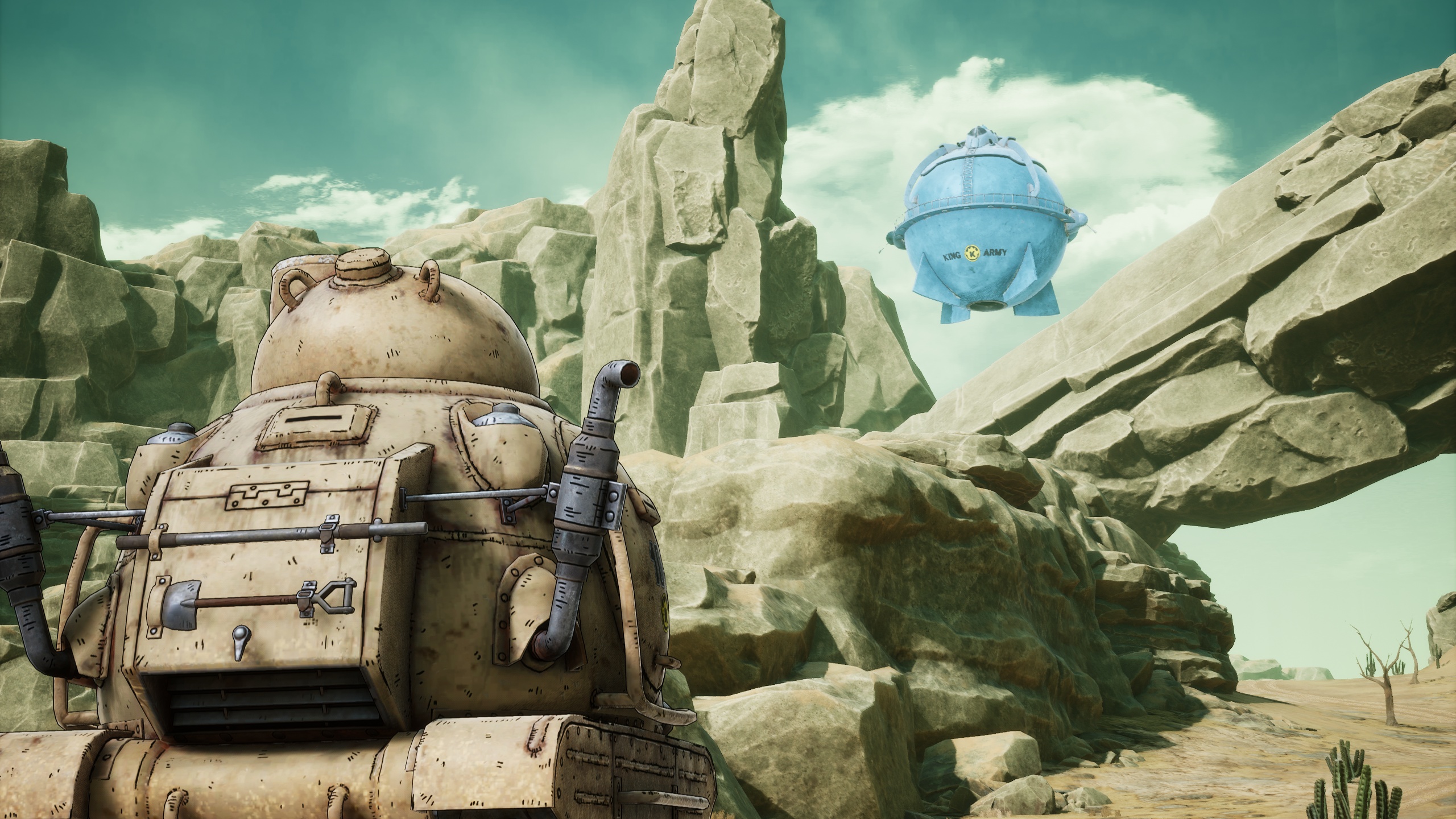
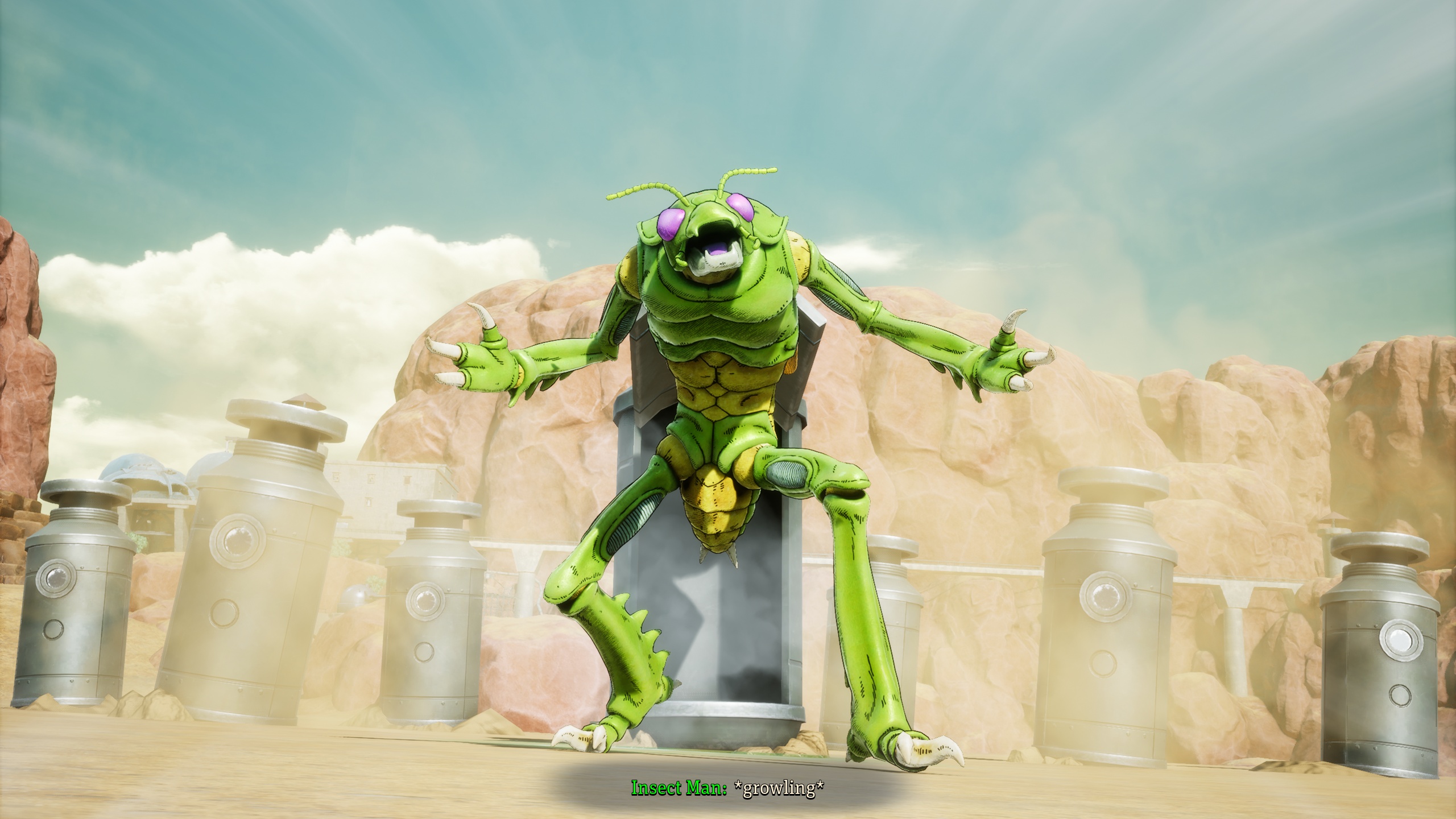
At least it doesn't take any time at all to hop around the map, thanks to a generous fast travel system. Any major town or health-restoring water station I've already visited automatically becomes a free teleportation point, so the chances are when someone says "Hey, maybe we should go to…" it'll only take a few clicks.
Unfortunately, wherever I end up the vehicles find another new way to disappoint. I may be able to bring up to five of them with me at any time, but they all serve very narrow roles. The environmental obstacles and puzzles I encounter always have just one bot-based solution to them—use this one to pull this heavy box, use this specific type to hover over this otherwise impassable terrain—and sometimes a particular bot is only needed for a few seconds before I'm better off either switching back to my trusty tank or Beelzebub's pointy-shoe'd feet.
Plenty of enemies will try to pick a fight as I poke around, and I'm free to either have my purple little ball of demonic royalty punch them into submission or hop into something more substantial and take them out that way. These battles are so seamlessly integrated into Sand Land's world that there's nothing to stop me from picking monsters off from a distance, or even just boosting my way straight past them. That freedom is a good thing, as the game's combat is not complex enough to warrant more serious attention.
Battles on any of the game's three freely changeable difficulty settings rarely required me to do anything more demanding than make sure I was hitting the enemy more often than they hit me, and using one of the widely available repair kits from time to time if I needed to. Pinpoint-accurate shots at weak points just aren't relevant here, nor is anything as obvious as shooting a tank's treads to stop it moving. Larger bosses are often accompanied by hordes of weaklings or defensive turrets—both of which have a nasty habit of infinitely respawning. These could have been an interesting tactical consideration, something to prioritise, clear out, or even fear. Instead they're generally better off ignored, robbing these climatic clashes of even that layer of tactical potential.
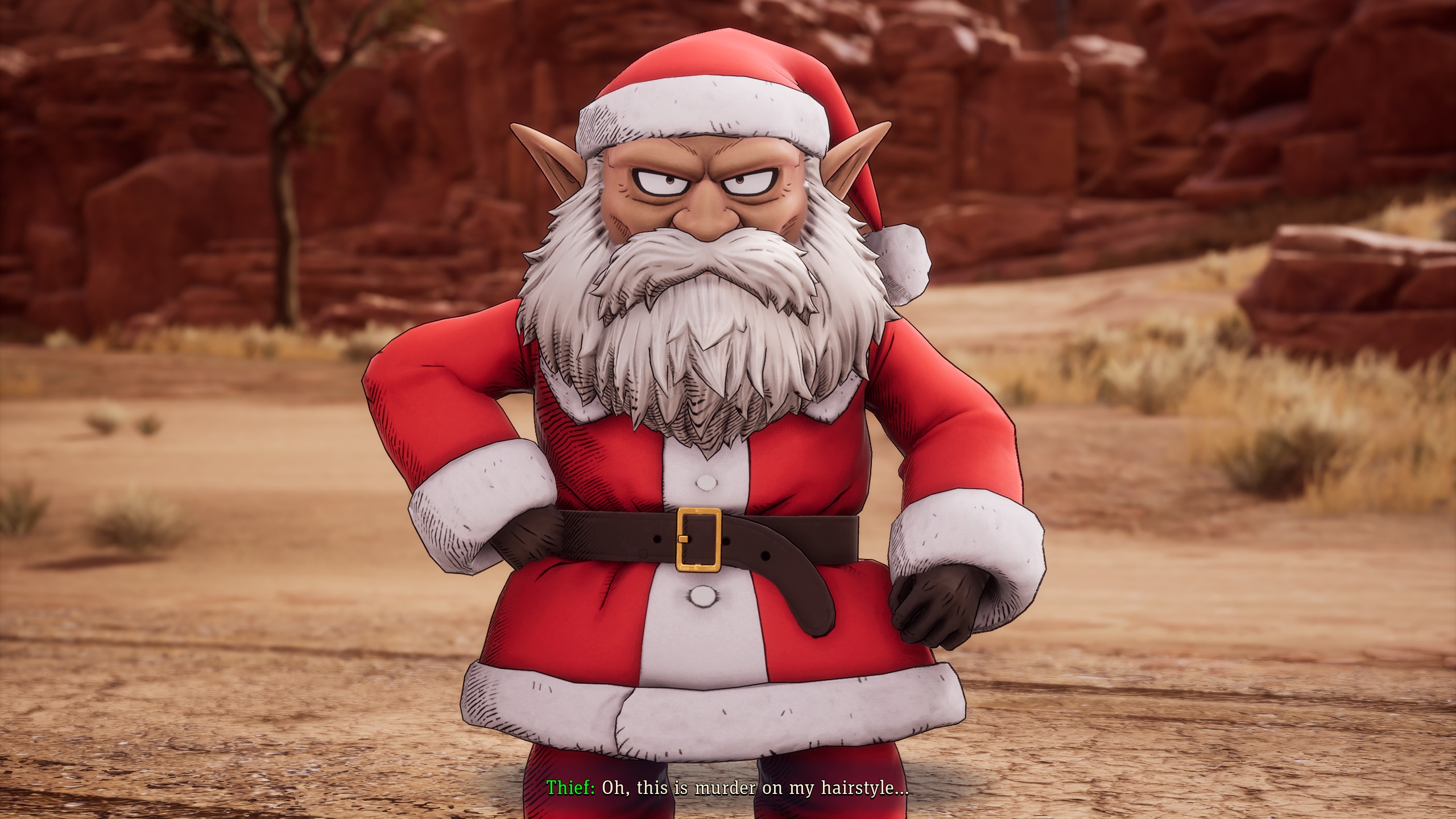
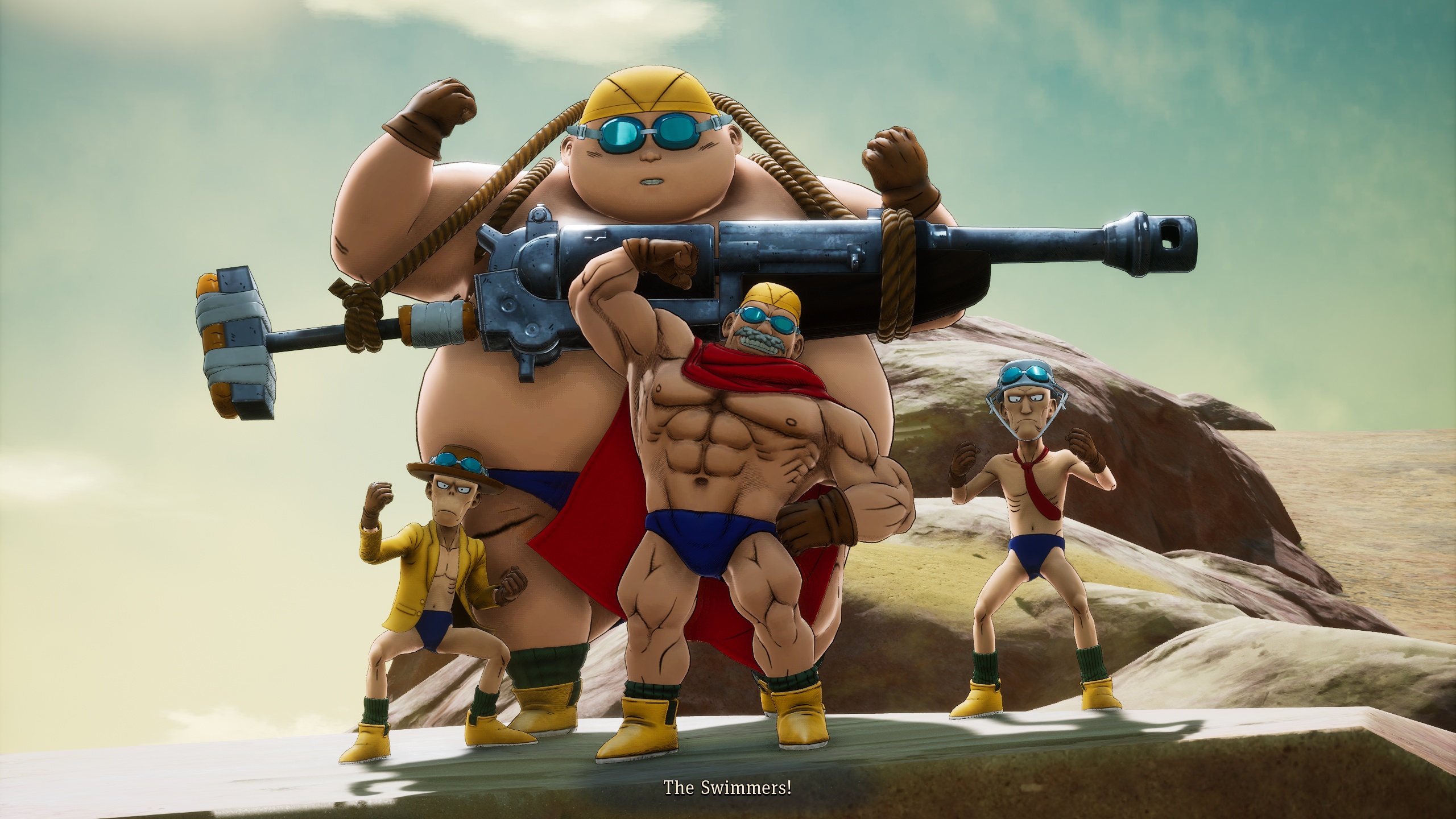
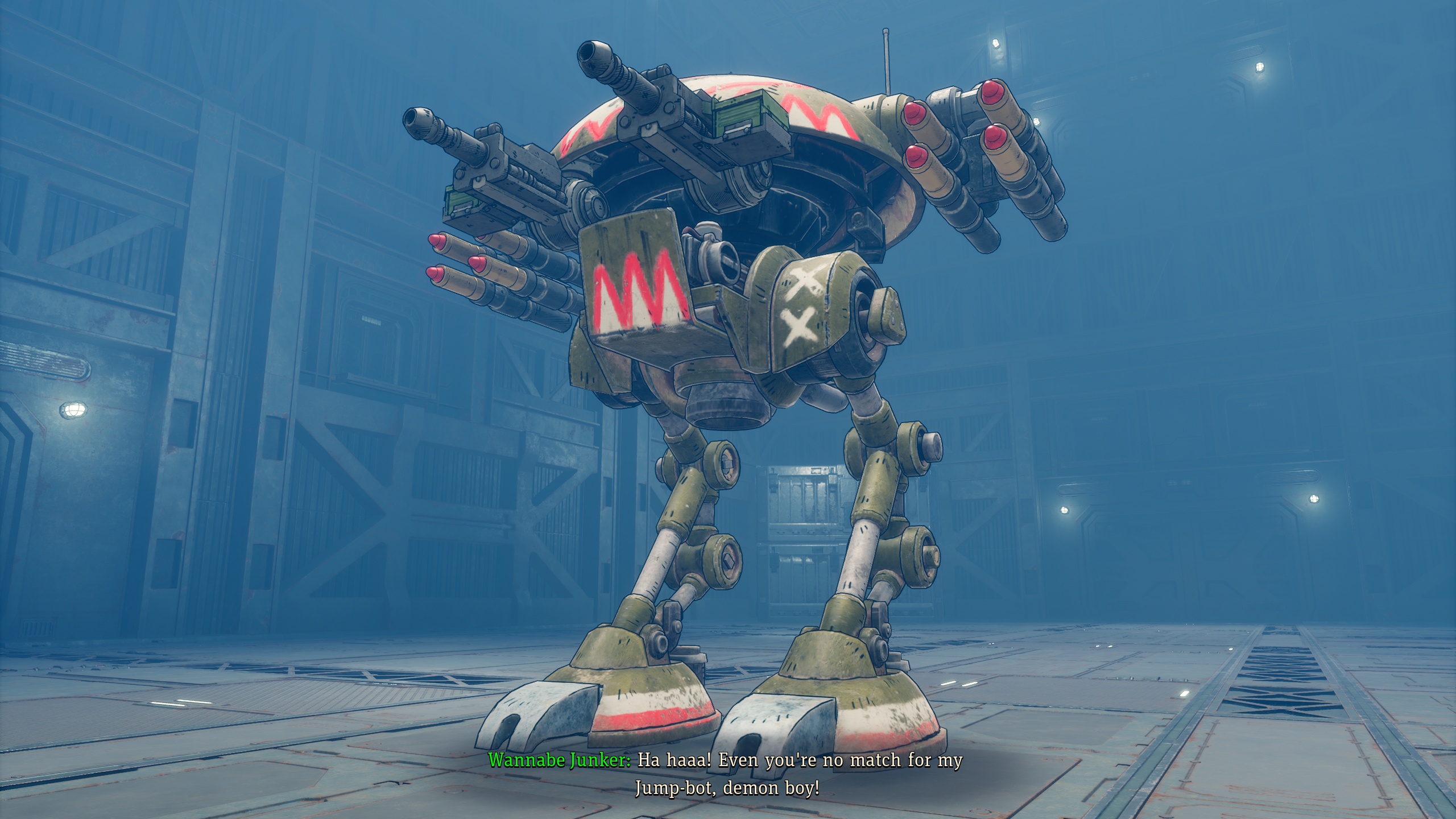
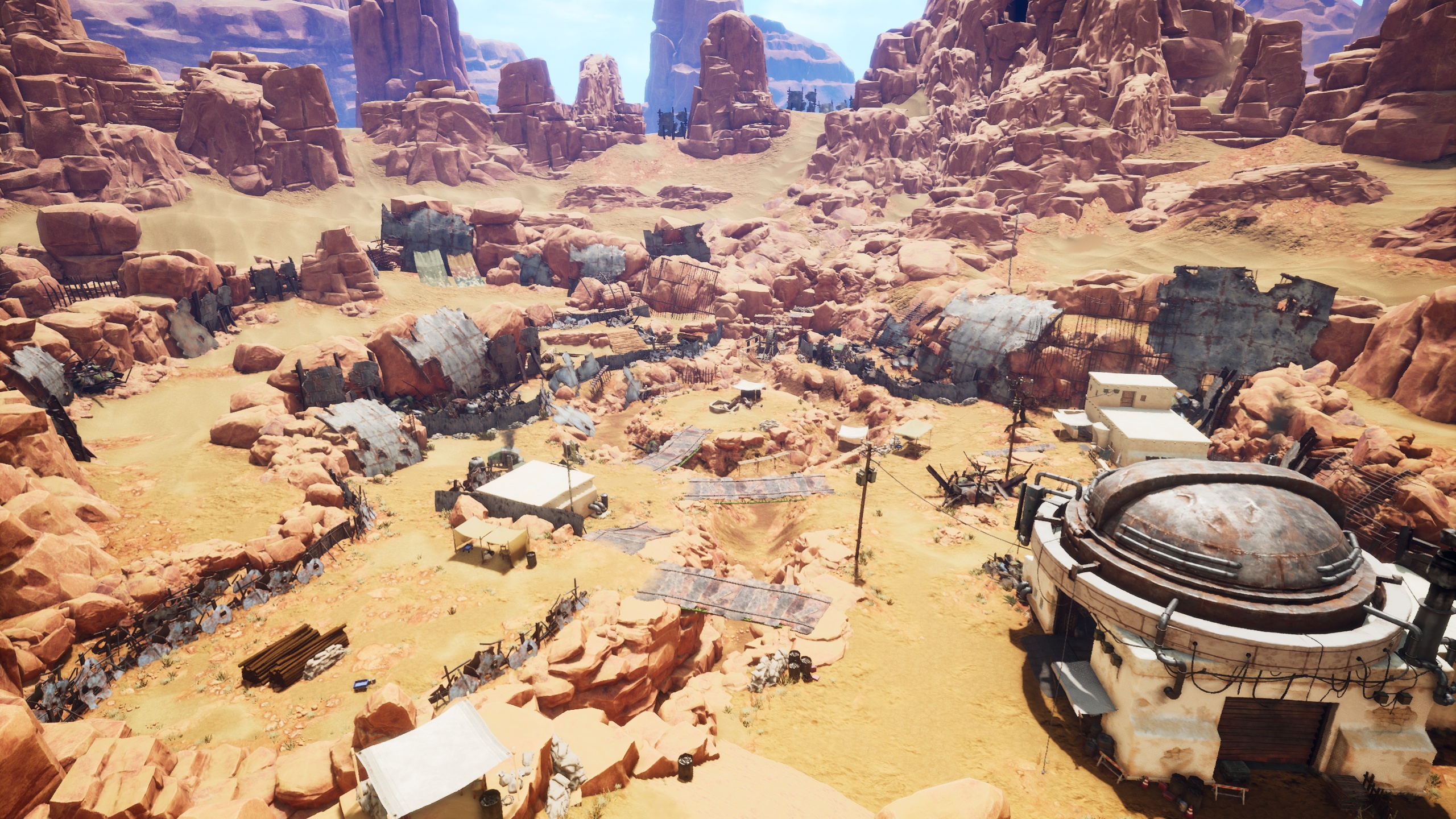
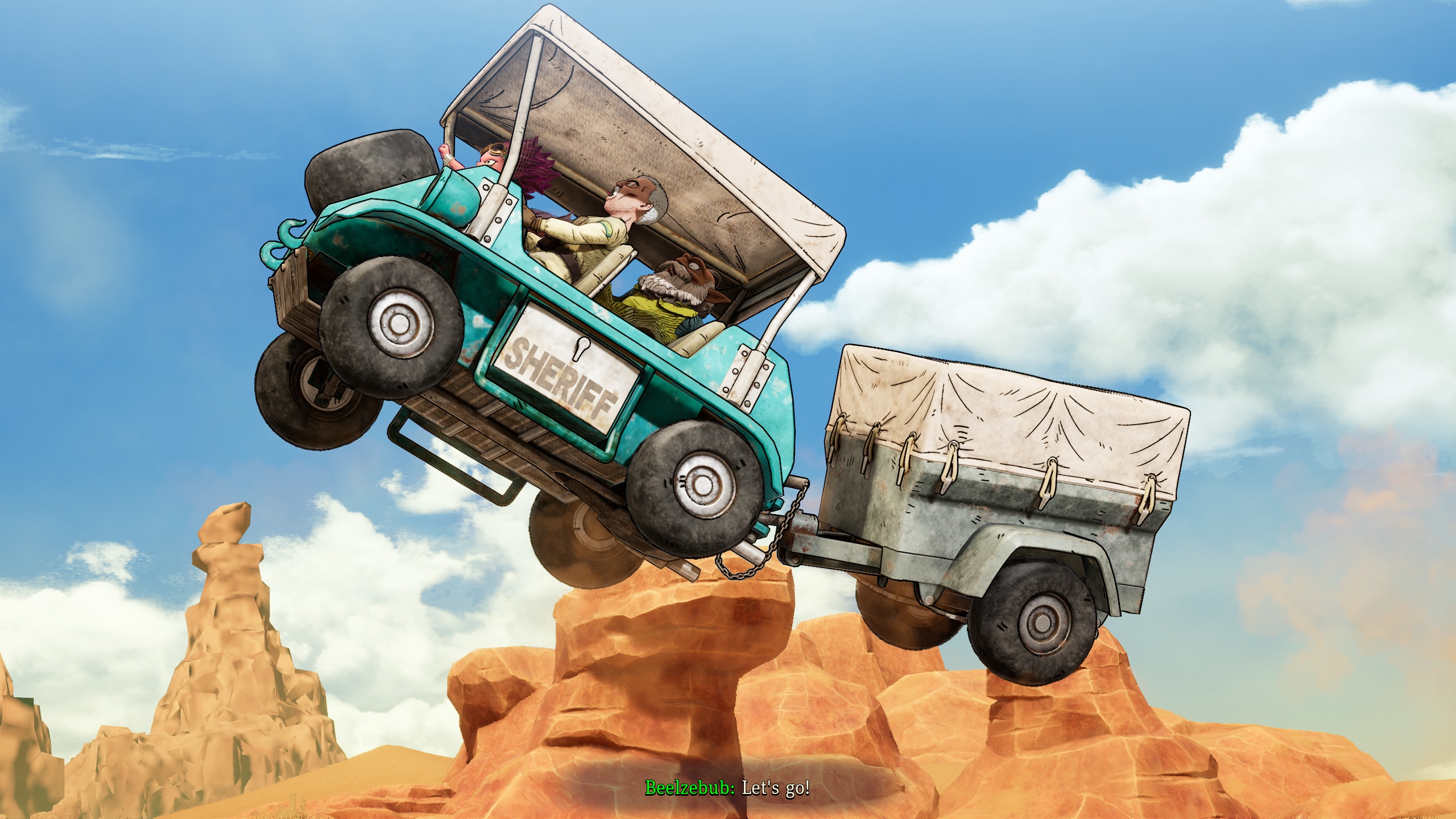
At least Sand Land's likeable rag-tag cast of generic stereotypes—Fiery Youth, Grizzled Veteran, Girl With Obvious Secrets, Bad Guys Who Become Good Guys After A Chat—and the eco-conscious story they're tied up in do their best to liven things up. Yes, hoarding natural resources for profit and war are bad, and Sand Land should say it. The messages get a little lost when the only response I have to anything is to blow it up with a tank, but it does try.
The winsome characters aren't enough to save something that plays like the dictionary definition of a licensed anime game though. Sand Land definitely looks the part, but the game underneath is never anything more than a scattered collection of unsatisfying bits and pieces. This particular take on Toriyama's sandy setting is destined to last in people's minds about as long as an ice cube in the desert.







